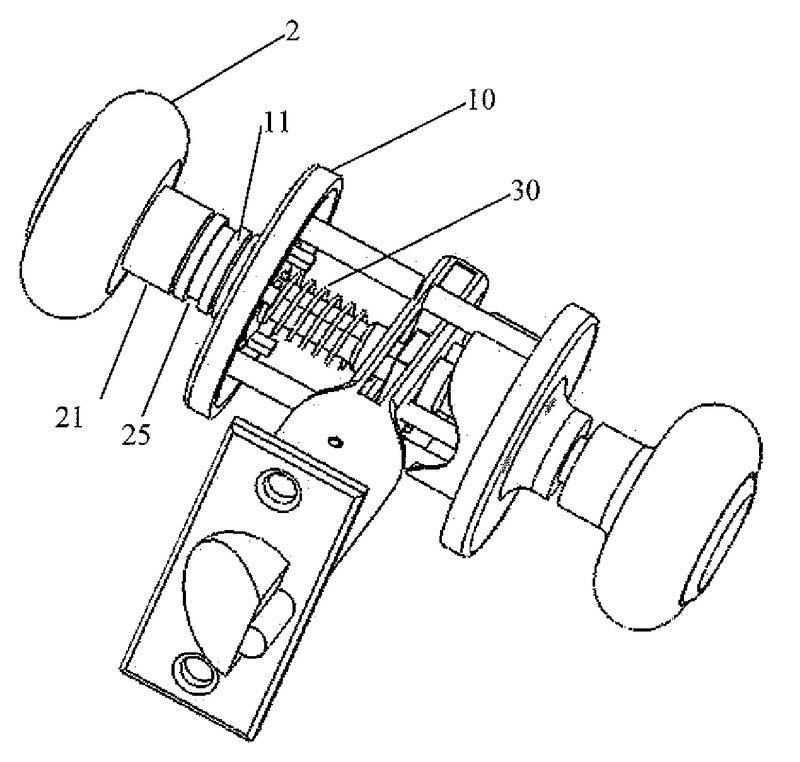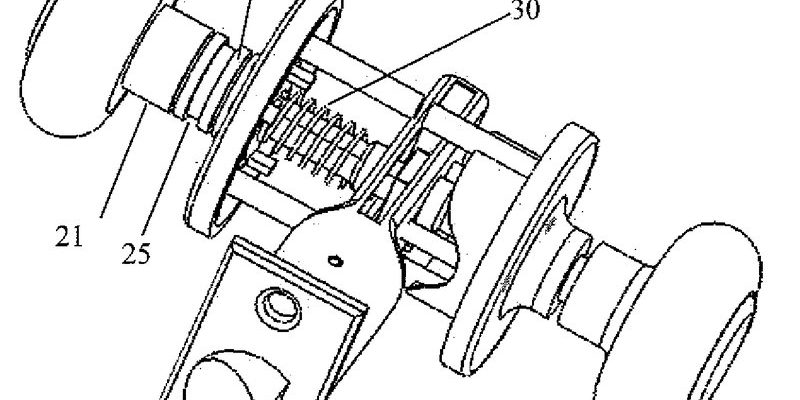
Honestly, maintaining an exterior door knob is one of those tiny chores that saves big headaches later. It doesn’t matter if your knob is a fancy Schlage or a simple Kwikset—when it gets sticky, it’s time for a little TLC. Lubricating the mechanism keeps it feeling brand new, helps prevent lockouts, and even protects against rust and wear. Let’s break down exactly how you can do this, no matter your brand or skill level—so your next entry (or exit) is smooth and stress-free.
Why Door Knobs Start Sticking or Squeaking
You might be wondering, “How does a door knob’s inner workings even get jammed up?” Well, most exterior door knobs deal with a lot more than just your hands. They’re exposed to outdoor humidity, temperature swings, dust, and sometimes even bugs looking for shelter. All of this can work its way into the *latch mechanism*—the cluster of gears and springs that actually make the knob turn and engage the lock.
Over time, the metal parts inside lose their original factory grease. The moving bits start rubbing on each other with no barrier. That’s when you feel resistance, grinding, or hear a high-pitched squeak every time you twist. It’s a sign the mechanism is drying out and things are wearing down faster than they should.
If you ignore it, small problems turn into bigger ones—like keys getting stuck, locks not engaging, or knobs that flat-out refuse to turn. Regular lubrication acts like a refresh button for your door knob. It keeps parts gliding smoothly, helps prevent corrosion, and makes every turn feel as easy as day one.
Choosing the Right Lubricant for Exterior Door Knobs
Here’s the thing: not all lubricants are created equal, especially for something that lives outside and locks up tight. Some folks reach for WD-40 out of habit, but that’s really more of a solvent than a proper lubricant. It’s good for breaking up rust, but it doesn’t offer lasting protection—so things might feel better for a day or two, then get sticky again.
For exterior door knobs, your best bet is a *dry Teflon (PTFE) spray* or a *graphite powder*. These don’t attract dust or gum up over time. They’re designed to slip into the tiny crevices inside the mechanism and keep things moving freely without making a mess. If you prefer something that’s liquid, a silicone-based spray is another safe option. It clings to the gears and springs but won’t turn into gunk or trap grit.
- Dry PTFE spray: Resists moisture and keeps dirt out. Ideal for most brands.
- Graphite powder: Good for weatherproofing, especially in cold climates.
- Silicone lubricant: Handy for older knobs or locks that have started sticking.
Strong-smelling oils, like 3-in-1 or motor oils, might seem like quick fixes but often end up making things worse. They attract grime, which leads to that crunchy, gritty feeling down the line. Stick with products meant for locksets and exterior use—your door knob (and anyone who uses it!) will thank you.
Tools and Supplies You’ll Need
Before you get started, let me explain what you’ll actually need—no fancy gadgets required. The right supplies make the job quick, easy, and a lot less messy. Here’s what to gather:
- Lubricant: Dry PTFE spray, graphite powder, or silicone spray (pick one, not all)
- Phillips or flat-head screwdriver: Most door knobs need this to remove the cover plate or knob
- Clean rag or paper towels: For wiping off old gunk and catching drips
- Small brush or cotton swab: Useful if you need to clean out dirt inside the mechanism
- Optional: compressed air canister: If you see a lot of visible dust or debris
You won’t need to disassemble the entire door lock, especially if you’re just doing basic maintenance. But if your knob is seriously jammed, removing it for a deeper clean makes things easier. Don’t worry—most brands like Schlage, Kwikset, or Yale are designed for simple removal with just a couple of screws.
Step-by-Step: How To Lubricate an Exterior Door Knob Mechanism
Let’s break this down so you can actually picture each part of the process. Take it slow; rushing is how you end up with greasy hands and a mess on your door.
- 1. Clean the surface. Wipe down the door knob and the area around the latch with a clean rag. Dirt and old grease can make things worse if it gets pushed inside as you work.
- 2. Remove the knob or cover plate (if needed). Most exterior knobs have screws on the cover plate. Loosen these with your screwdriver so you can gently pull the knob away. If your model doesn’t have exposed screws, check for a pin hole on the neck of the knob—pressing this with a small tool can release the handle.
- 3. Expose the latch mechanism. With the knob off, you’ll see the latch and the moving parts inside. Blow out any dust or fluff using compressed air (if it looks dirty). A small brush or cotton swab can help loosen any grime stuck inside.
- 4. Apply the lubricant. Here’s the big moment. For sprays, hold the straw nozzle right up to the moving parts and give a short burst or two. For powders (like graphite), puff a little into the mechanism, then turn the latch back and forth to spread it around. Don’t go overboard: too much lubricant can actually attract dirt.
- 5. Test the mechanism. With everything still apart, twist the latch and turn the internal pieces to make sure they move smoothly. If it still feels rough, add another tiny bit of lubricant and try again.
- 6. Reassemble and wipe excess. Put the knob and cover plate back in place, secure the screws, and give everything a final wipe-down. Open and close the door a few times, testing the knob from both sides. You should feel a big difference already!
It’s worth repeating: use only a small amount of lubricant, especially with powders. Too much can cause more problems than it solves.
Common Problems: What If It’s Still Sticky or Jammed?
Sometimes, even after you’ve carefully lubed your exterior door knob mechanism, it still feels stubborn. Maybe the key is tough to turn, or the latch doesn’t snap back like it used to. Don’t panic—there are a few easy things to check before calling in a pro.
First, make sure you’ve actually reached the moving parts with the lubricant. It’s easy to just spray the outside, which doesn’t do much. If you skipped removing the knob, try again and apply directly inside. For really old or corroded locks, it might take an extra round of cleaning and a bit more patience.
Another common culprit? Alignment issues. If the latch doesn’t line up well with the strike plate (the metal bit on the door frame), even a freshly lubed lock can stick. Double-check that nothing is loose or out of place. If you’ve recently installed a new lock or moved door hardware, a minor adjustment might be all it needs.
And of course, remember: sometimes, a lock or knob is just too far gone. Rust, years of grit, or a busted spring can leave a mechanism beyond saving. If you’ve tried two or three rounds and it’s still a pain, replacement might be the answer—you deserve a door that feels as good to use as it looks.
How Lubrication Extends the Life of Exterior Door Locks
Let me explain why a little maintenance goes a long way. Door knob mechanisms are like tiny engines: dozens of little moving parts, all working together every time you open or lock up. When these parts lose their *protective coating*, metal grinds against metal, wearing down faster and eventually breaking.
A well-lubricated exterior door knob resists rust, shrugs off rain and moisture, and stays smooth no matter how often it’s used. The right lubricant forms a shield—a dry, nearly invisible layer that lets parts glide instead of scrape. This is especially important for folks in damp or humid climates, where exterior locks can seize up in a single wet season.
And here’s something people rarely mention: a smooth-turning door knob is one of the best ways to avoid lockouts. Stuck keys, jammed latches, and stuck springs are often the result of too much friction inside the mechanism. Regular lubrication keeps everything synced up and reliable, which means less hassle (and fewer emergency locksmith calls).
Comparing DIY Lubrication vs. Professional Door Knob Service
You might be thinking, “Should I really do this myself, or is it a job for a locksmith?” For most brands and types of exterior door knobs—Schlage, Kwikset, Yale, or even off-brand models—a little routine lubrication is totally DIY-friendly. These mechanisms are designed to be maintained and can be taken apart and reassembled with just a screwdriver.
A professional locksmith usually isn’t necessary unless you run into bigger problems. That could mean a key stuck and broken inside, a mechanism so rusted it won’t move, or a lock that simply won’t latch no matter what. In these cases, pro service is a smart call, but for everyday upkeep, you’re saving time and money by handling it yourself.
The nice part? Once you’ve done it once, you’ll see it’s really no different than changing a battery in your remote or syncing a new universal remote control—just another basic home skill. A few simple steps, the right product, and you’re set.
How Often Should You Lubricate Your Exterior Door Knob Mechanism?
This is a question that comes up a lot, especially for folks who’ve just wrestled their way through a sticky door knob for the first time. Most brands recommend lubricating exterior door knobs at least once a year—more often if you live somewhere with heavy rain, lots of dust, or salty sea air.
If you notice any of these signs, it’s probably time:
- Squeaking or grinding when you turn the knob
- Resistance or jamming while locking/unlocking
- Key feels gritty or hard to turn in the lock
- The latch doesn’t snap all the way back into place
Think of lubrication as a quick tune-up—like resetting or syncing your remote when it gets glitchy. A little regular care keeps everything running the way it should, and it only takes a few minutes.
Wrapping Up: Keep Your Entry Smooth and Stress-Free
Keeping an exterior door knob mechanism smooth isn’t just about comfort—it’s about security and peace of mind. Whether you’re working with a top-name brand or a basic hardware store model, a few minutes with the right lubricant can extend the life of your lock, prevent annoying problems, and make your daily comings and goings a breeze. You don’t need special skills or fancy tools; mostly, you just need to pay attention and act when you notice things getting sticky.
Next time your door knob fights back, give it some care. You’ll be rewarded with a satisfying, buttery-smooth turn—every single time. That simple fix? It’s one of the easiest home upgrades you can make.
